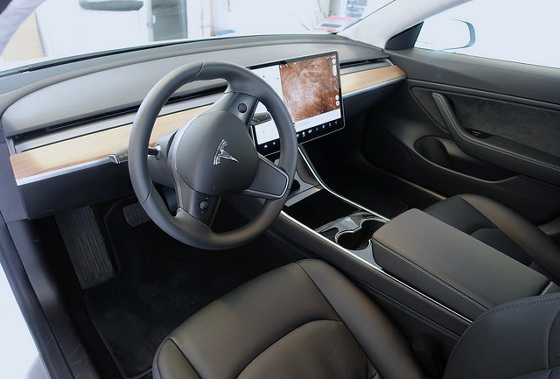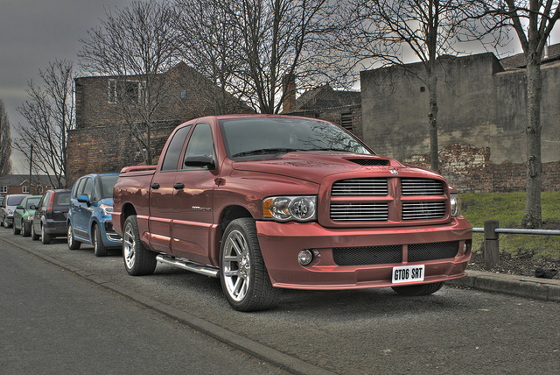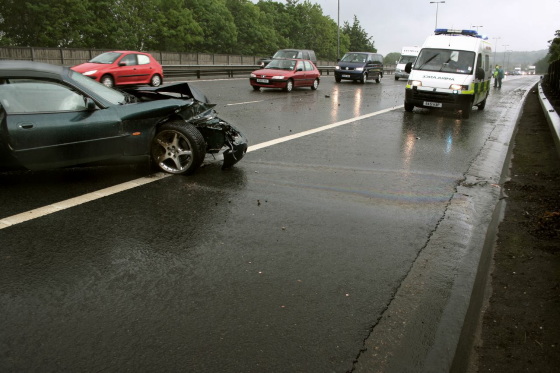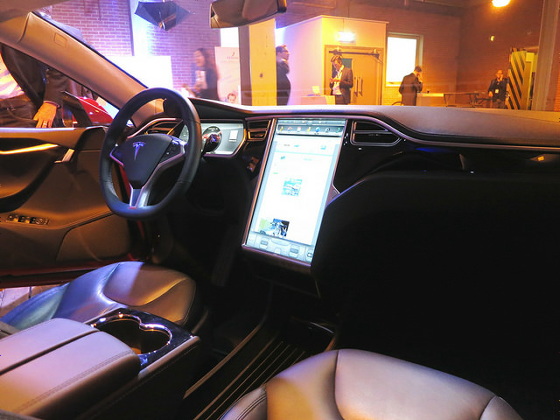The data scientist analyzes the claim that Tesla argues that "autopilot is 3.7 times safer than general car"

ByAutomobile Italia
I caused an accident while using the "Auto Pilot" automatic driving function that will run the car instead of the driverCase of the death of the driverTesla said that the probability of a fatal accident being caused by this function is low and it is 3.7 times safer than the statistical data "1 time per 86 million miles (about once per 140 million km)" in general carsAssertiondoing. But for this dataCritical viewThere are also experts indicating that data scientist Dr. Bringa A. Thomas has an entry to investigate and analyze the data Tesla publishes in detailMediumPosted on.
A Closer Inspection of Tesla's Autopilot Safety Statistics
https://medium.com/@mc2maven/a-closer-inspection-of-teslas-autopilot-safety-statistics-533eebe0869d
Tesla announces the incidence of fatal accidents from its own vehicles as "once per mileage of 320 million miles (about once per 515 million km)". However, if you describe this number more strictly according to Tesla's explanation, "Mileage 320 millionAuto pilot · mileIt will be written as "once per turn". Regarding how to catch this autopilot / mile, Mr. Thomas is contesting while showing a certain understanding to Tesla's statistical law.
In order to correctly evaluate "the rate of fatal accidents caused by autopilot", it is necessary to take statistics on accidents that occurred in the state where the autopilot function is actually turned on in Tesla's vehicle. However, Mr. Thomas pointed out that Tesla bounced off this figure based on "the total mileage of vehicles equipped with the autopilot function" and states that there is inappropriate handling of numbers. That is, regardless of the operating state of the autopilot function, it is a collection of numerical values of all the vehicles equipped with the optional auto pilot function, including the mileage when a man is driving It is pointed out that it can not be considered as a comparison target, and depending on the viewpoint, it is possible to see that it is "inflating the accident travel distance" because it is.

BySteve Jurvetson
Also, Thomas says that it is necessary to consider accidents that occur when returning from the auto pilot running state to the manual mode. When the computer judges that the road line is difficult to see while the road is running with autopilot, or if the computer judges that the sight is blocked by stormy weather can not drive, the autopilot function will be turned off and manipulation will be given to humans. Although it is said that the accident that occurred in such a situation is omitted from the statistics, Mr. Thomas argues that this should also be considered as part of the autopilot operation.
There is also a negative opinion in how to select the number of accident data "one per 86 million miles" of general vehicles that Tesla is subject to comparison. Many experts come from this figureAmerican Road Safety Association(IIHS) has released itStatistical dataI think that it is. However, this figure is derived only from Tesla's vehicles because the driver and passengers and pedestrians have figured out the probability of being killed in an accident of any and all vehicles such as motorcycles, pickup trucks, SUVs, trucks, buses, etc. It is not a fair to compare with numbers.

ByIan
Mr. Thomas commented that there are two main elements of "accident occurrence per vehicle" and "passenger and pedestrian involved in the accident" when statistics of a car accident are taken. At this time, "Vehicle" of "Number of Accidents per Vehicle" can be equated with the vehicle with auto pilot, but the numerical value "passenger and pedestrian involved in the accident" is the situation There is a difference depending on.
For this reason, the ideal calculation method for finding out the fatal accident incidence rate should be "to estimate the ratio of accident that one or more drivers and passengers or pedestrians died and mileage per vehicle" "Said Thomas. In addition, we also stated that it is necessary to match the car rank of the vehicle that encountered the accident. It is a view that it is not fair to consider a model S with a car width of 2 meters and a car weight of about 2 tons in line with comparatively small vehicles such as the Toyota Prius.
Unfortunately, IIHS does not provide such data. Therefore, if we translate the published data "the number of driver deaths per million vehicles is 29 to 32 people" and "the annual mileage per vehicle is 11,000 miles (about 18,000 km)", The annual mortality rate of the driver will be "one person (about 550 million kilometers to one 610 million kilometers)" from 340 million miles to 380 million miles.

BySam Greenhalgh
However, in addition to the driver, the overall death accident incidence including pedestrians and passengers may be higher. In the data of 'Accidental death by type' announced in 2016 by the type of accident, the accident that the driver suffered damage of the whole accident is less than 60%, but this includes truck drivers and passengers, bicycles and motorcycles It does not include the number of passengers dead. The incidence of fatal accidents when these figures are included is considered to be "once every 210 million to 23,000 miles (once every 340 million to 370 million km)".
This figure is close to the occurrence rate of fatal accidents caused by own vehicle manufactured by Tesla "Once per mile of 320 million miles (once per about 515 million km)", Tesla's Mr. Thomas says it will be far from the claim that "3.7 times safer than general cars". Thomas shows a view overturning Tesla's argument, but Thomas says that the content of the assertion is so different from that, "Tesla is comparing the fatal accidents of all the vehicles in the world It is incidence, and this method is not fair. "
Mr. Thomas said that Tesla used the method IIHS used to calculate the accident rate "Poisson regression"We should analyze the data using the data. American think tank "Rand Research Institute"Said that in order to obtain statistical confidence that autonomous vehicles are 20% better than humans, it is necessary to verify based on traveling data of more than 8 billion miles (about 13 billion kilometers) is.
Also, the Rand Research Institute has releasedDecision making toolAccording to 2020, by sending the "partial automatic driving car" of the same level or slightly higher safety than conventional vehicles to the world, 50 It will lead to saving more than 160,000 lives per year. In other words, delaying delivering a car that is capable of autonomous operation even if it is partial indicates that there is a possibility that many human lives may be lost by accident.

ByMirko Tobias Schäfer
Related Posts:







